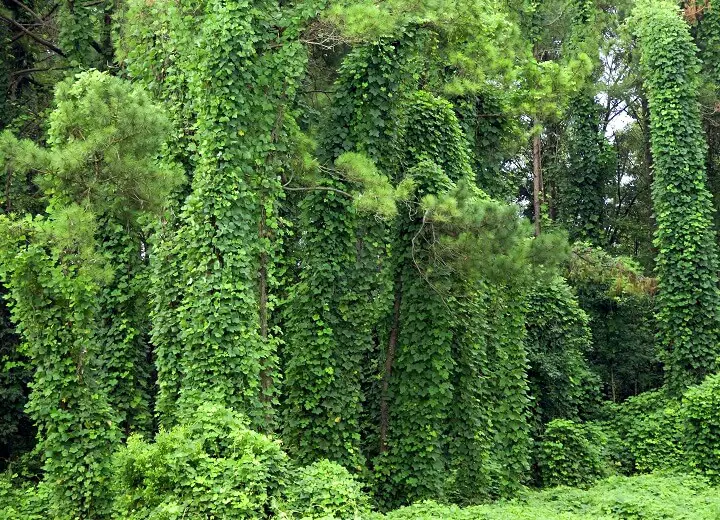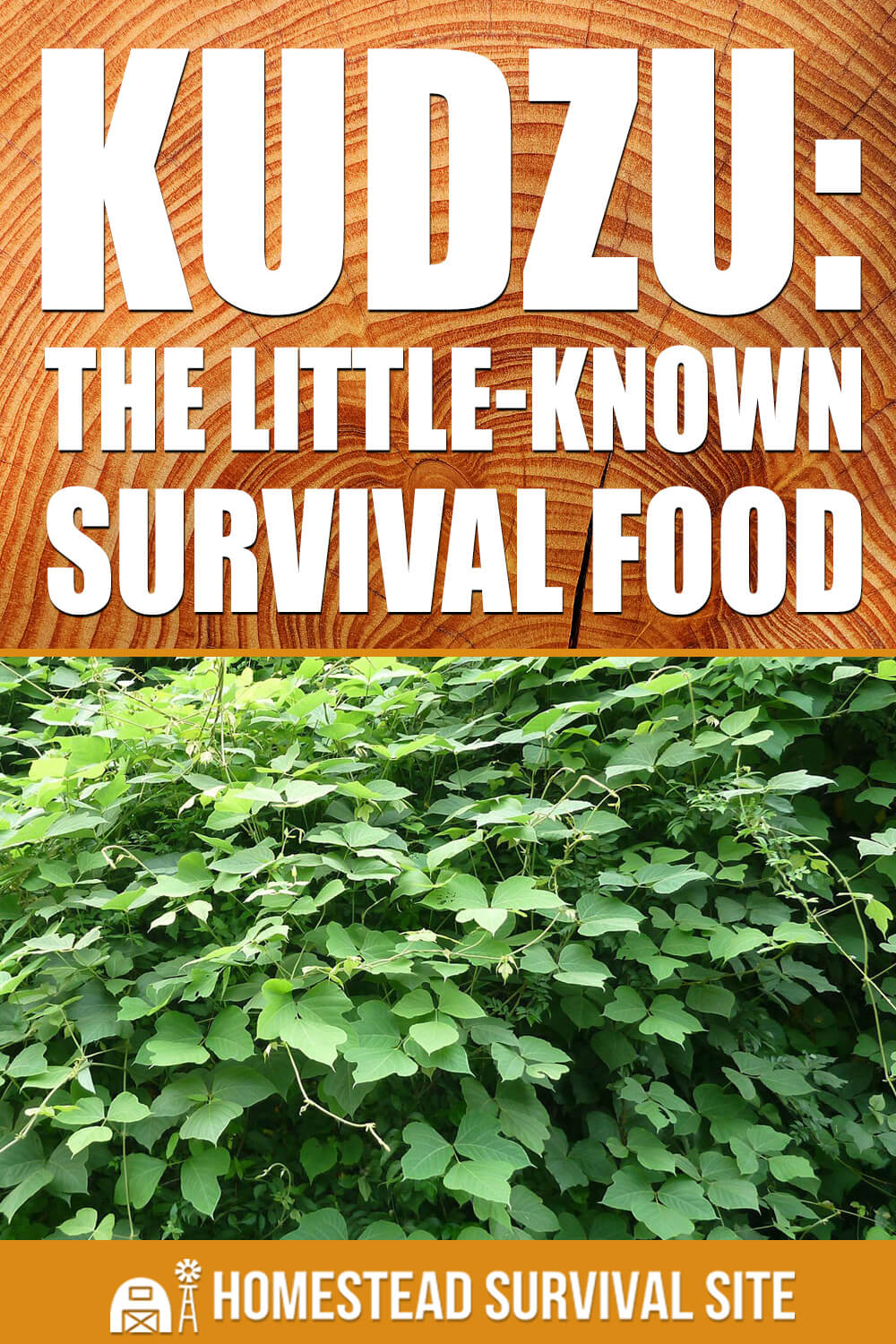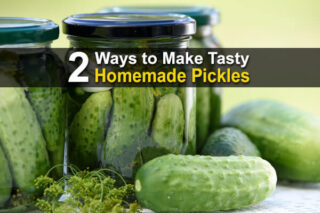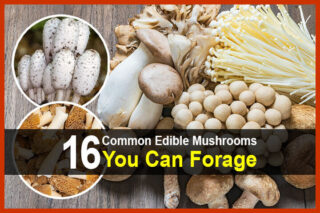Estimated reading time: 7 minutes
Kudzu is a plant that has earned a bad reputation as “the vine that ate the South.” And although its introduction to the United States is not without some cost, it has some impressive benefits, as well.
This vine has been used for food, forage, and has a number of other interesting uses. Keep reading to find out what you need to know about kudzu and its uses on the homestead.
Want to save this post for later? Click Here to Pin It On Pinterest!
What Is Kudzu?
Kudzu is also known as Japanese Arrowroot. This is a hardy legume that produces large amounts of long, sturdy vines. In 1876, it was brought to the United States as an ornamental plant. Later, in the 1930s to 1940s, kudzu was planted to prevent soil erosion and to stabilize land around railroad tracks.
This fast-growing vine can grow up to a foot per day under the right conditions.
How to Identify Kudzu
You may have seen pictures of towns covered in heavy green vines, overshadowing trees and cars into green shapes reminiscent of what they once were. This quick-growing vine can grow so fast that it might cover trees, buildings, and other large objects, smothering native plants in its path. But more specifically, this deciduous woody vine can reach 10 inches in diameter, with large leaves.
Each dark green leaf has 3 compound leaflets which can grow up to 6 inches long. Six-inch long stems of reddish-purple flowers are produced by this vine. The blossoms are upright and bloom from June through September. The vines themselves can grow anywhere from 35 to 100 feet long.

Where and When Does Kudu Grow?
Kudzu grows along the edges of fields and forests, especially in areas with well-draining soil and eroded land. Although it grows well under a variety of soil conditions, kudzu prefers full sun and is most prevalent in the eastern and southern areas of the United States.
Because kudzu is deciduous, it will lose its leaves in the fall and go dormant in cooler areas. In will begin to grow again in the spring. In the south, where the winter isn’t cold enough to kill the vine, it can overtake entire forests. However, in the northeast, the climate helps keep this vine under control.
Is Kudzu Invasive?
Kudzu is definitely labeled as a noxious weed and is an invasive threat in some areas. It is considered an invasive species because it did not originate in the United States and it's a threat to many types of native plants.
Although some say the kudzu vine is not as much of a problem as others believe, it can smother native plants with its aggressive growth and lack of natural species that eat it.
How to Cook and Eat Kudzu
Although the actual vines of kudzu plants are not edible to humans, the leaves, flowers, and roots are edible and have a taste similar to spinach. If you can positively identify it, it makes a good source of protein and nutrients during difficult times.
Of course, you should only eat wild species that you can identify and you must be careful not to confuse them with similar, potentially toxic species of plants. When in doubt, do not take the chance.
Kudzu can absorb lead from the soil, and it may possess the ability to take in other toxins, as well, so care should be taken to only eat kudzu from areas that are not polluted. Avoid harvesting kudzu from areas near landfills or factories, farm runoff, or other sources of chemicals.
Better yet, carefully cultivate your own kudzu vines so you can be assured that your kudzu is safe to consume.
Some ideas for eating kudzu:
- Raw – You can eat raw kudzu leaves just like you would eat salad greens.
- Boiled, baked, and fried – Prepare kudzu like other leafy greens or dandelion leaves.
- Flour – Kudzu root is a source of starch, and it can be ground to make gluten-free flour.
- Jelly – The sweetness of kudzu flowers lends well to make them into jelly and jams.
Kudzu Nutritional Content
Are you wondering why you should eat Kudzu? Check out the nutritional content and see for yourself just how nutritious it is.
Kudzu roots contain starch that is often used as thickeners and to make drinks. The roots, leaves, and flowers contain many antioxidants. And the plant has a high crude protein content and up to 60 percent digestible nutrients, which makes it an excellent food source for people and animals. Because it is so prolific, it also makes a great survival food.
Recipes:
- Kudzu Blossom Jelly – For a beautifully colored, tasty jelly, try this recipe
- Kudzu Jelly – Try this gut-healing cherry-berry kudzu jelly.
- Kudzu Pudding – For a delicious dessert, try this recipe that uses kudzu powder.
- Kudzu Quiche – Follow this link for kudzu quiche and other delicious recipes using kudzu.
- Kudzu Salsa – Here is a unique recipe that uses kudzu for fresh, homemade salsa.
- Kudzu Tea – Use this recipe to make tea from fresh kudzu leaves.
- Kudzumochi – Try this recipe for a traditional Japanese sweet.

Additional Uses for Kudzu
Although kudzu is a great leafy green and survival food, it has some other excellent uses on the homestead as well, making it a handy and helpful plant.
- Animal Feed – The high protein content, numerous antioxidants, and presence of leafy greens make this a great browse for livestock.
- Biofuel – Some fuel companies are looking for ways to turn kudzu into ethanol.
- Baskets – Kudzu vines and runners have been used throughout history to weave baskets. They can be used green or can be dried and rehydrated for weaving.
- Cloth for Clothing – Interestingly, this vine can also be woven into cloth to make clothing. Here’s an example.
- Fertilizer and Nitrogen Fixer – Because kudzu is a legume, it will adjust the nitrogen content of the soil. Chopping and dropping kudzu will also act as a green mulch and will add biomass to your soil.
- Fragrance – Kudzu flowers have a sweet smell and it is often used as a fragrance in soaps and lotions.
- Health and Nutrition – Kudzu has been used in Chinese and Japanese folk medicine to treat problems such as diarrhea, fever, and headaches. It is thought to be anti-inflammatory.
- Paper – Kudzu can be made into paper. This community board has some ideas on how to go about it.
- Rope – A drop spindle can be used to turn kudzu vines into rope. You can learn how here.
- Soil Erosion – Kudzu has been traditionally been planted to stop soil erosion.
Is It Legal To Grow Kudzu?
Kudzu is easy to grow and propagate and will spread quickly. In some areas, it is considered to be an invasive weed and is illegal to grow, sell, or transport. If you are looking to grow this vine, make sure you check your state and local laws so you don't get in trouble. In many southern areas, the vine is easy to find growing in the wild and could potentially be harvested for food and other uses.
If you can harvest or grow kudzu safely, it makes an excellent source of leafy greens and starch. It may be used in folk medicine for home remedies, and it also makes an excellent source of food for livestock. Of course, kudzu has a number of other uses as well, making this quick-growing vine an excellent resource for the homestead.
Like this post? Don't Forget to Pin It On Pinterest!












This is a new one on me ,Thank You so much for the Information. I’m very so pleased with the help.🤔😁😁😁😇🤗